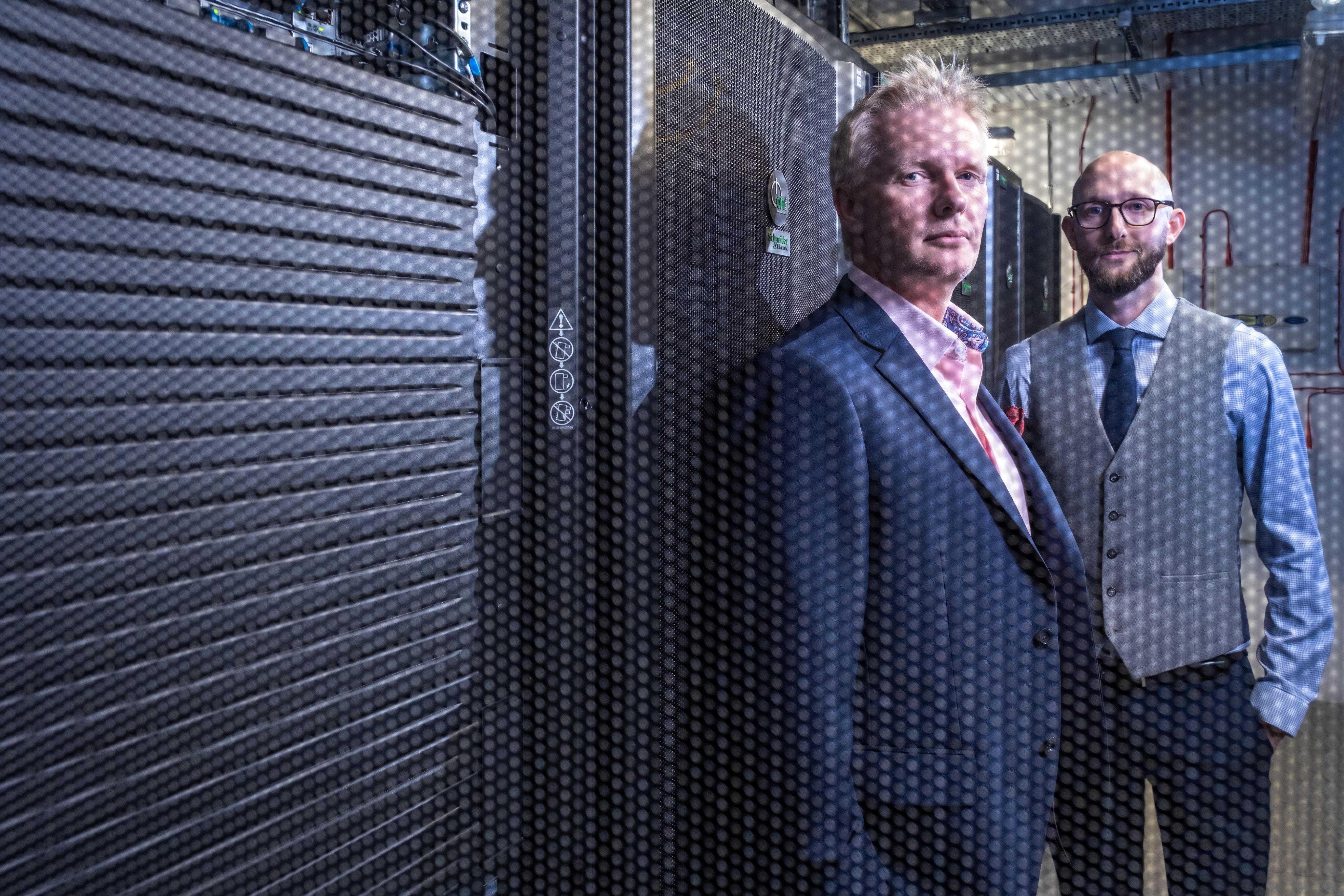Decoding the digital carbon footprint: exposing the global data challenge

Digitalization is rapidly transforming our world, but its hidden cost is rising with alarming speed. We now generate more data than ever, and this has a surprising environmental impact.
Researchers Professor Tom Jackson and Professor Ian Hodgkinson, from Loughborough University in the U.K., are at the frontline of work to tackle our digital carbon footprint.



Data’s hidden footprint
Digital data is generated by humans in every corner of the world – every second of every day. And all this data contributes to carbon dioxide emissions — with every click, search, list, and image requiring electricity to generate, process, and store this data.
Just how much data we create is open to debate. In 2020, IBM estimated that the data generated amounted to 1.7 megabytes per second for each person on Earth.
Putting this into context, if we assume the same rate of data creation over a 7.5-hour workday, it translates to nearly 46 gigabytes of data for one individual – the equivalent of taking and storing over 15,000 mobile phone photos a day. Over the course of a year, this amounts to just over 22 tons of carbon dioxide being created from data.
In 2020, EY suggested that digitalization already accounted for 4 percent of global GHG emissions – nearly twice the human carbon dioxide emissions generated by the aviation industry.
With the rapid rate of increase in the total global volume of data creation, capture, copying and consumption, the contribution of digitalization and digital data to Greenhouse Gas emissions is likely to be far greater than this by 2025.
The cost to organizations
To illustrate the magnitude of the problem and its effect on organizations, let’s take the example of a nature-based carbon offsetting scheme, where businesses plant trees or restore habitats to offset carbon emissions and reduce their environmental impact.
In this scenario, a single ton of carbon dioxide is valued at $12.83 in nature-based carbon offsetting. If we imagine offsetting the data created by 100 people working five days a week, 7.5 hours a day, over an entire year, the associated cost would be $28,613.
While the cost of carbon offsetting schemes can vary significantly, this illustration highlights why the environmental impact of data is so important. It’s not just about sustainability; it affects the bottom line for all types of organizations — private, public, and non-profit alike.
Minimizing carbon emissions and improving how data is created, processed, and stored is crucial for universities, governments, and businesses to achieve both sustainability and economic goals, while at the same time cutting costs caused by inefficient digital practices.
Herein lies the critical role of digital decarbonization.

Digital decarbonization and reducing data waste
Research from Loughborough Business School, which is recognized as the authority on digital decarbonization by international bodies, is playing a key role in helping organizations to understand and address the impact of data on carbon dioxide emissions.
Many organizations do not consider their data carbon footprint and are unknowingly burdened with wasteful digital practices like data duplication, leading to a rise in carbon dioxide production.
With technological advancements making data capture easier than ever, the threat of dark data — data that is used once and then forgotten but remains in data storage — continues to escalate and creates a significant strain on energy use. Smart devices, from thermostats to trackers, are a large contributor to this kind of data. IBM estimates that up to 90 percent of sensor data collected from Internet of Things (IoT) devices goes unused.
And it’s not just technology that contributes to dark data production. Jackson and Hodgkinson, who are leading Loughborough’s work in this area, have revealed how poor knowledge management practices within organizations can also generate substantial amounts of single-use data.

Identifying the numerous common pathways to the creation of single-use data, it comes as no surprise that Amazon Web Services reports cases where a staggering 80 percent of on-premise primary business data has not been accessed in years, but has been consuming power to keep it available.
With artificial intelligence (AI) increasingly being adopted and used within organizations, Hodgkinson and Jackson also emphasize the importance of incorporating responsible data management practices into AI planning. This, they say, is crucial to minimize unnecessary data and prevent the potential significant environmental impact of unchecked AI.
“Massive amounts of data are required to train AI models,” says Jackson. “Inefficient storage of this data – along with legacy training data – can lead to heightened energy consumption.
“Through the adoption of data management strategies that prioritize data minimization, efficient storage and responsible data disposal, organizations can reap the full benefit of AI while reducing its ecological footprint.”
A proactive approach to digital decarbonization
The task of measuring the energy cost of data isn’t a simple one.
"Measuring the energy cost of data is remarkably complex”, Hodgkinson says. “This complexity can be attributed, in part, to the data industry's opacity, lack of available evidence and disagreements over establishing a standard measurement."
While these challenges require collaboration across the digital ecosystem — a process that will inevitably take time — organizations can take proactive steps to start their journey towards digital decarbonization.
Hodgkinson and Jackson have pioneered the development of a free data carbon ladder tool, believed to be the first of its kind, that allows organizations to forecast the carbon dioxide output of their digital practices, from origin to end use of data.Top of Form
By forecasting where and how data carbon dioxide will be generated, organizations can take steps to reduce carbon-intensive activities before any environmental and financial damage is done. The tool is part of a digital decarbonization toolkit that supports organizations to achieve their net-zero ambitions.

Digital decarbonization and higher education
Loughborough University is taking its own steps to reduce the environmental impact of its digital operations. Using a digital decarbonization self-assessment program directed by Hodgkinson and Jackson’s research, the university is actively evaluating its own digital decarbonization capability. This will help to inform digital net zero actions as part of their broader sustainability goals for 2050.
The university is also launching a series of scholarships to support doctoral researchers to work on a set of interconnected projects focused on transforming the digital ecosystem and redefining approaches to digital tools and processes and their environmental impact.
For higher education leaders looking to reduce the digital carbon footprint of their own institutions, Jackson and Hodgkinson suggest focusing on the following six questions when managing data and knowledge assets:
- Where is (existing) digital data being stored?
- Why is new data and information needed?
- Which information governance structures enable new knowledge to be codified?
- Who is responsible for sharing new data and information with others?
- What are the opportunities for data and knowledge reuse?
- When is digital data evaluated and digital waste disposed of?
Addressing each of these six questions will help to mitigate against poor digital practices and minimize the creation of dark data, single-use knowledge, and redundant, obsolete, and trivial data — collectively reducing the carbon offsetting cost and reducing negative environmental impact.
Embedding these questions into organizations digital sustainability practices is a simple but effective way to reduce data CO2 and promote digital decarbonization.

Loughborough is one of the UK’s leading universities, with an international reputation for research that matters, excellence in teaching, strong links with industry, and unrivalled achievement in sport and its underpinning academic disciplines. It has been awarded five stars in the independent QS Stars university rating scheme, named the best university in the world for sports-related subjects in the 2023 QS World University Rankings and University of the Year for Sport by The Times and Sunday Times University Guide 2022. The University has been awarded seven Queen’s Anniversary Prizes, and in the Research Excellence Framework (REF) 2021 over 90% of its research was rated as ‘world-leading’ or ‘internationally-excellent’.
This content was paid for and created by Loughborough University. The editorial staff of The Chronicle had no role in its preparation. Find out more about paid content.



